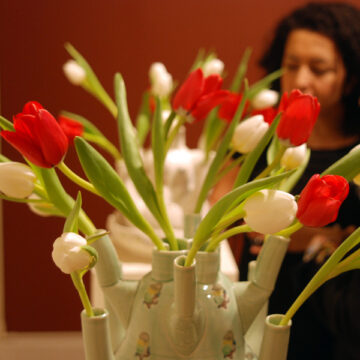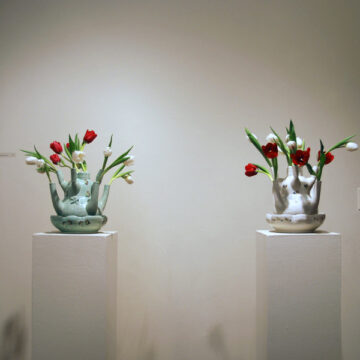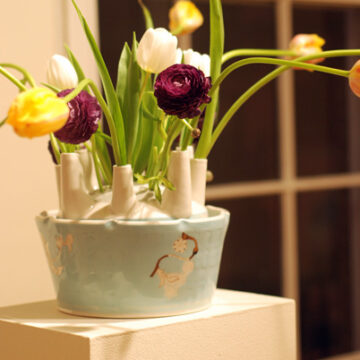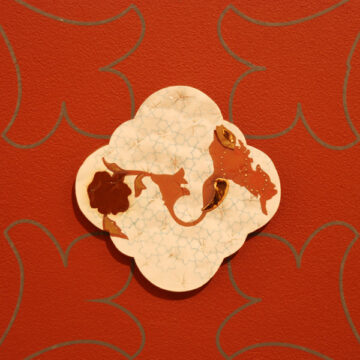a story of the tulip and the tulip vase
The tulip is a wildflower said to originate in western and central Asia, mainly Armenia and Persia. The origin of the word tulip is unknown. One explanation for the name tulip is its resemblance to the headgear worn by Persians – the turban. The turban was also written as “toliban” which is translated into Latin as “tulipa”.
The Austrian ambassador to the Ottoman court is said to have stolen seeds and bulbs and carried them back to Europe. In 1562, tulip bulbs reached Holland. Before the turn of the century, tulips had been a rarity that only the wealthy could afford, and thus became a status symbol. By the 1620’s tulip cultivation and trading had become popular with merchants as well as the Dutch aristocracy who coveted exotic mutations. By 1623 bulbs were being sold while still in the ground, and by 1634 began a period historians now refer to as Tulipomania. Tulip bulbs were sold for the prices of good houses. In 1637, the tulip market crashed and left Holland in financial ruin.
These events coincided with the beginnings of the Dutch East Indies Trading Company and the import of Chinese porcelain. Delft potters, influenced by Italian maiolica brought to Europe by the Moors from the Middle East, began to emulate the Chinese porcelain. The rise of tulip madness may have contributed to the creation of the idiosyncratic Dutch flower vase with spouts, the tulip vase.



















